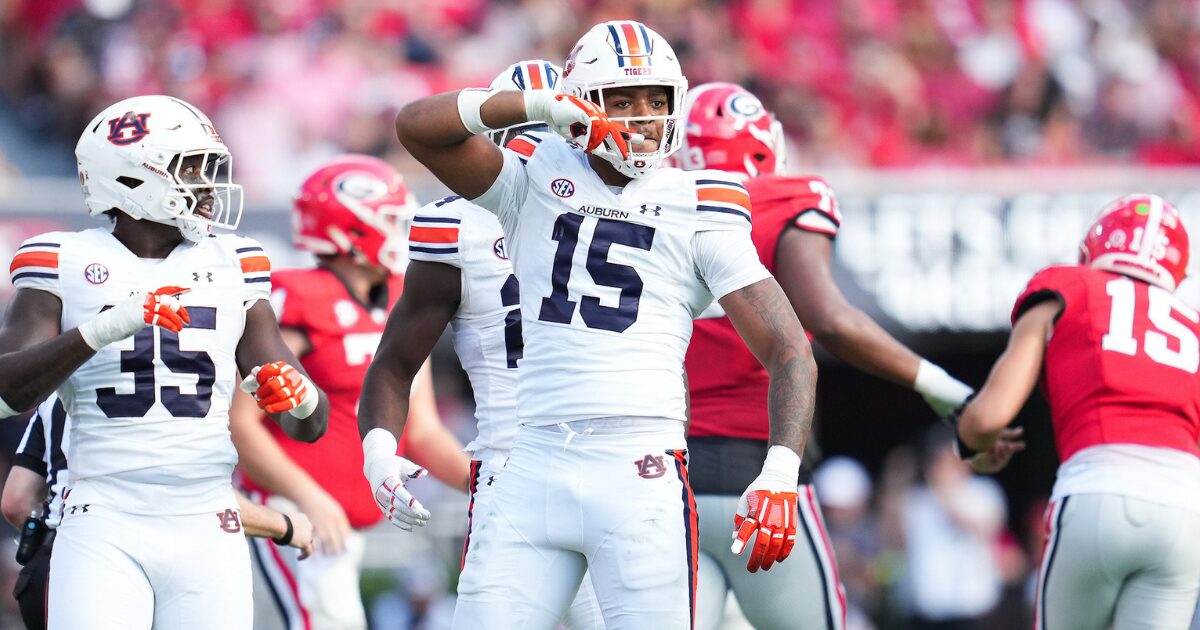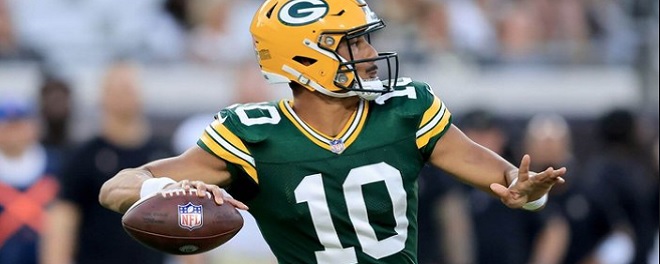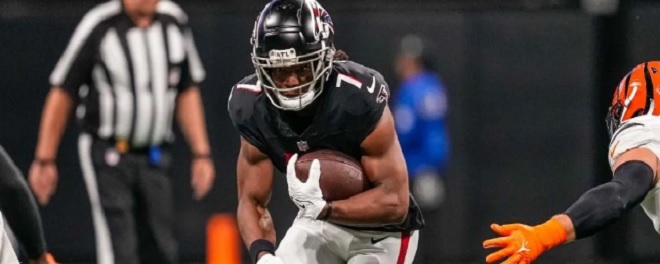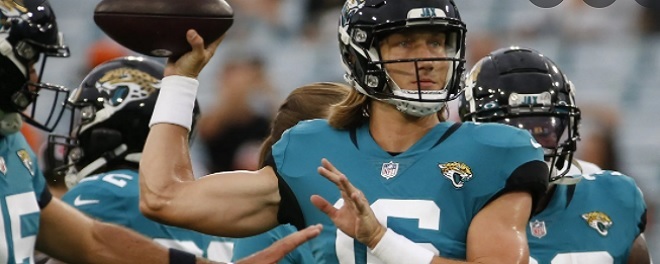Solid Starter
 Martinas Rankin, OL, Arizona – Round 3
Martinas Rankin, OL, Arizona – Round 3 
Even after signing Zach Fulton, Senio Kelemete and Seantrel Henderson, Houston needed more help on its offensive line. The Texans are without an established starting left tackle or right tackle, so Rankin has a real shot to start as a rookie. He could be better than projected starting left tackle Julie’n Davenport or Henderson, who hasn’t played in the NFL in years. Rankin is an intelligent and experienced player who could easily beat out Davenport or Henderson for a starting spot.
In pass protection, Rankin is good at sustaining blocks. While he needs to get stronger in the upper body and his base, he does have strong hands that help him to keep pass-rushers engaged and not let them break free. He is a good athlete with quick feet and the ability to kick slide with speed rushers. Rankin is very good at defending the edge from fast pass-rushers. He possesses agility in space and shows a nice ability to adjust. Rankin is a smart blocker who quickly picks up blitzers or stunts and should become an asset as a pass protector early in his NFL career. In the ground game, Rankin is good to hit blocks in space and fire to the second level. He can occupy his defensive ends, but he isn’t a true bulldozer who blasts defenders off the line. He would be a good fit in a zone-blocking system.
Rankin could already be the blind-side protector for Deshaun Watson as a rookie. Even if he doesn’t remain at left tackle in the NFL, Rankin could make the transition to be a starter at right tackle or guard. Before long, Rankin could be a solid starter for the Texans.
2017: Zach Cunningham, LB
2016: Nick Martin, C
2015: Bernardrick McKinney, LB
2014: Louis Nix, DT
2013: DeAndre Hopkins, WR
Most Likely To Bust
 Keke Coutee, WR, Texas Tech – Round 4
Keke Coutee, WR, Texas Tech – Round 4 
The Texans had a lot of good prospects available to them early in the fourth round, but I think they blew a pick on Coutee. Houston needed some depth for a slot receiver, but there are a lot of issues with Coutee fitting in with the Texans. Taking him in the fourth round when better players were available at bigger needs, was a mistake by Houston general manager Brian Gaine and head coach Bill O’Brien.
Houston has a huge need at the cornerback position because Jonathan Joseph and Kareem Jackson are on their last legs. Jackson can’t run anymore and has been picked on routinely during the past two seasons. Wisconsin cornerback Nick Nelson was available, and he could have been a long-term starter as teams had him graded in the second round. Alabama cornerback Anthony Averett is another player who had higher grades and could have been a better pick than Coutee, because Averett could have competed right away. The Texans also could use running back talent, and Miami’s Mark Walton would have been an upgrade for them. He was a better consensus player than Coutee as well.
Aside from those better players being available, I think there are a number of pitfalls that could lead to Coutee being a bust for the Texans. The 5-foot-10, 181-pounder is a small fast receiver who produced some big plays in Texas Tech’s point machine offense. He was not taught route-running, however, which is going to be a problem in the NFL. Sources said that Coutee was literally told to just run to open patches of grass rather than running routes. He also is said to struggle with learning, and the Texans run a complicated offense. The hot-tempered O’Brien could easily get frustrated with Coutee’s struggles to learn the playbook and running routes. As a result, it wouldn’t surprise me if the coaches are more comfortable playing veterans Braxton Miller and Bruce Ellington with Coutee struggling to see the field. The selection of Coutee reminds me of the Texans taking Jaelen Strong in 2015. O’Brien wanted Strong while some of the top scouts wanted Cardinals running back David Johnson. That was a mistake that continues to haunt Houston.
2017: Julie’n Davenport, OT
2016: Braxton Miller, WR
2015: Jaelen Strong, WR
2014: Xavier Su’a-Filo, G
2013: Sam Montgomery, DE
Potential Boom Pick
 Justin Reid, S, Stanford – Round 3
Justin Reid, S, Stanford – Round 3 
There were some projections of Reid being a first-round pick, but those projections were a bit lofty because most teams had Reid graded as a second- or third-round pick. Because of the first-round hype, Reid was viewed as a big steal for the Texans in Round 3. However, that is an adequate value for Reid, who us a well-rounded safety and could benefit from the talent around him to provide a big presence for Houston.
In the ground game, Reid is a physical safety who can function well as the eighth man in the box. He is a reliable tackler and willing to take on any back. While Reid (6-0, 207) is a tad undersized, he could play some as the eighth man in the box.
For pass coverage, Reid is reliable in zone coverage. He covers ground well and is adept at picking up receivers who come into his area. Reid has some coverage ability with movement skills, but he does not have great feel for routes. During the 2017 season, the Cardinal used Reid as a slot cornerback, and there were times when he looked okay there. However, USC proved that Stanford overestimated Reid’s coverage ability, seeking him out and exploiting him for a lot of big plays, especially in the Pac-12 Championship Game. Reid was used and abused in man coverage in those games. In the NFL, Reid should not be used as a nickel/slot cornerback. He is better suited to play man coverage against tight ends, or helping against big wide receivers along the sideline. Playing zone and keeping plays in front of him will suit him well as a strong safety in pass coverage.
With Jadeveon Clowney, J.J. Watt, Whitney Mercilus, Bernandrick McKinney and Zach Cunningham playing in front of Reid, he is going to have a lot of plays breaking down in front of him. He also has a good free safety in Tyrann Mathieu to play next to him. The Texans needed an upgrade at strong safety, and Reid could be poised to make a quick impact as a rookie.
2017: Deshaun Watson, QB
2016: Will Fuller, WR
2015: Kevin Johnson, CB
2014: Jadeveon Clowney, DE
2013: D.J. Swearinger, S
Future Depth Player
 Jordan Akins, TE, Central Florida – Round 3
Jordan Akins, TE, Central Florida – Round 3 
The Texans were desperate at the tight end position after doing nothing to help themselves in free agency after losing C.J. Fiedorowicz to retirement. Houston settled for Aikens in the third round, but he is a limited player. The 6-foot-3, 249-pounder could find a role as an H-back and receiving tight end in the NFL, but he does not have the size and strength as a blocker to be a three-down starter. He will have to rotate out of the game and won’t be a blocker for the rushing attack. Basically, Aikens is a slightly better version of Texans tight end Stephen Anderson. In the NFL, Aikens could end up being a nice contributor as a receiving tight end, but he is a backup and rotational player rather than a three-down starter.
2017: Carlos Watkins, DT
2016: Tyler Ervin, RB
2015: Reshard Cliet, LB
2014: Andre Hal, S
2013: David Quessenberry, OL
Walt’s 2018 NFL Draft Grades:
68. Justin Reid, S, Stanford A+ Grade
This might just be the best pick in the third round, and it’s not a surprise, given that the Texans are making it. Houston has one of the top front offices in the NFL, and it’s getting an absolute steal in Reid, who could have gone at the end of the first round. Reid is a very versatile safety who will be able to play all over in Romeo Crennel’s secondary.
80. Martinas Rankin, OT/G, Mississippi State A- Grade
No one should be surprised that the Texans are addressing their offensive line, as they absolutely need to protect Deshaun Watson. It’ll be interesting to see if the Texans use Martinas Rankin at offensive tackle or guard, as he could play in both spots. Rankin could’ve gone in the second round without any qualms, so I like this selection.
98. Jordan Akins, TE, Central Florida B- Grade
The Texans wanted to add a new tight end, as they’ve struggled at the position since Owen Daniels’ departure. Jordan Akins has his fans and haters, however. Akins has extreme potential with some great athletic ability, so he could become a dominant pro. However, he has motivational and health issues, so there’s a good chance he flops as well. I would’ve liked this pick better in the fourth round, but it’s not a bad one.
103. Keke Coutee, WR, Texas Tech C Grade
I’m not a big fan of this pick. Keke Coutee seemed like a solid fourth- or fifth-round prospect to me, but I would’ve liked to have seen the Texans go after their offensive line or secondary. There were plenty of solid prospects available for those positions, and someone of Coutee’s caliber could’ve been taken a bit later.
177. Duke Ejiofor, DE, Wake Forest C+ Grade
I’m curious about this fit. I thought Duke Ejiofor would be better off in a 4-3. I don’t like him too much in Houston’s scheme, and I also worry about his consistency and motor. That’s why he dropped to the sixth round. I don’t hate this selection, but I don’t think it’ll pan out.
211. Jordan Thomas, TE, Mississippi State C Grade
Jordan Thomas looks like an NFL starting tight end, but he hasn’t played like one at all. Thomas is incredibly inconsistent who will need to be coached up and motivated. There were better options available.
214. Peter Kalambayi, DE/OLB, Stanford C Grade
The Texans are taking several players on Day 3 who never lived up to their potential. When I was planning a 2018 NFL Mock Draft two years ago, Peter Kalambayi was one of the names I was considering. Unfortunately, he never played well in Stanford, and it’s not like he was being coached up. He has potential, but will likely continue to slack off.
222. Jermaine Kelly, CB, San Jose State C Grade
Jermaine Kelly transferred from Washington to San Jose State because he was benched. If he couldn’t start for the Huskies, how will he make it in the pros? I did not see Kelly as a draftable prospect, or even a priority UDFA.
2018 NFL Draft Team Grade: C+ . Follow Walter @walterfootball for updates.
Houston Texans Season Preview
NFL Power Rankings - Dec. 23
NFL Picks - Dec. 22
2026 NFL Mock Draft - Dec. 17
Fantasy Football Rankings - Sept. 1




